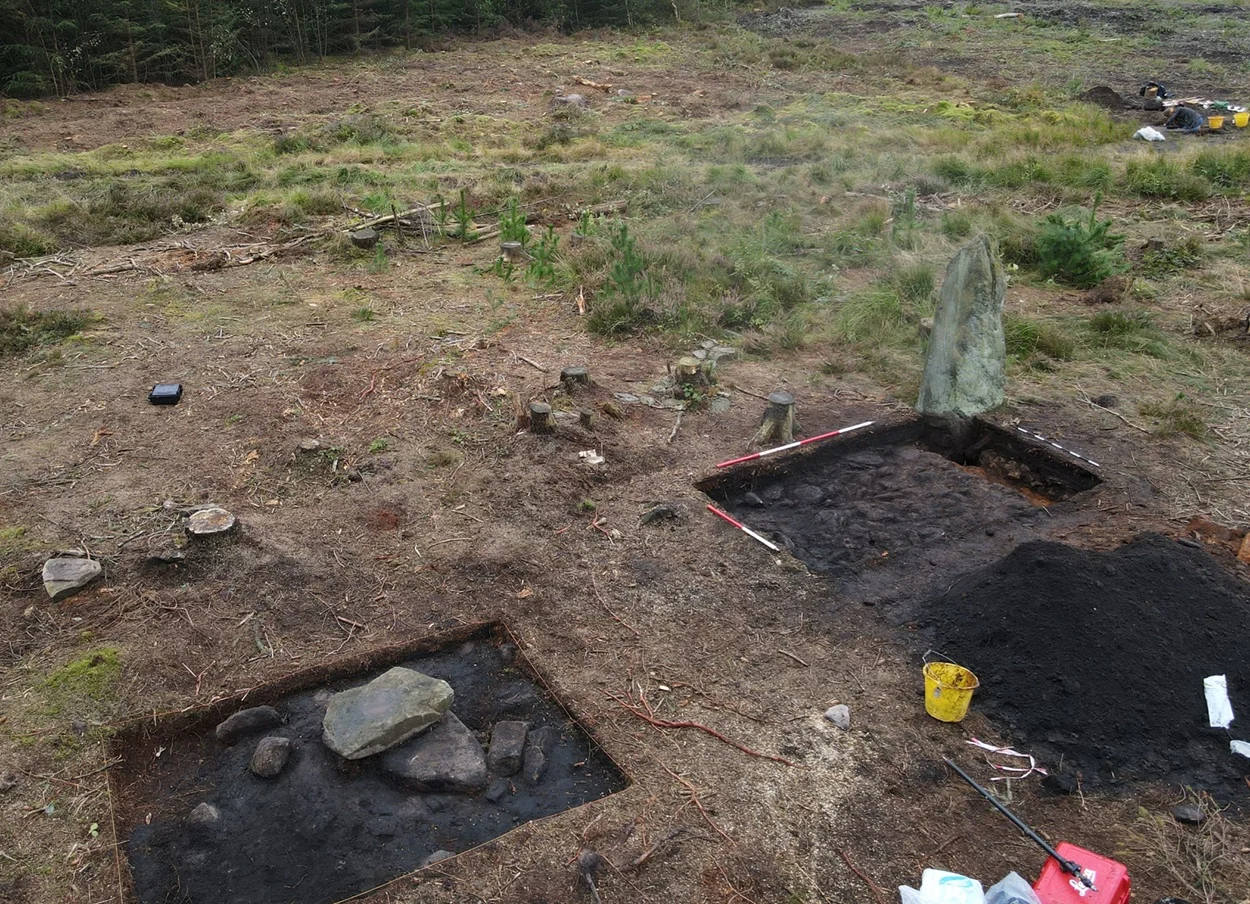Archaeologists from Time Team, working in collaboration with Forestry England, have discovered a 3,700-year-old stone circle on Farley Moor, located in Derbyshire, England.
A recent press statement from Forestry England reveals that a previously overlooked standing stone is part of a Bronze Age monument, complete with a ceremonial platform and a newly identified stone circle.
The two-metre-tall stone was previously thought to be a solitary marker, however, excavations by Time Time uncovered a ceremonial platform adjacent to the stone, which sites upon a natural spring – indicating a ritual connection.
The site is located at the headwaters of Bentley Brook, a tributary of the River Derwent. Experts suggest that this likely held a spiritual significance to Bronze Age communities who inhabited the area around 1,700 BC.
Archaeologists also found an additional five more stones that once stood upright, forming a circular or oval arrangement that covers an area of 25 by 23 metres.

Dr Lawrence Shaw, Forestry England’s Lead Historic Environment Advisor, said: “This discovery is hugely significant and transforms our understanding of the Farley Moor site. What we’ve uncovered is evidence of a much more complex ceremonial landscape, which the original standing stone is part of. The stone platform predates the standing stone itself, suggesting continuous ritual use of this site over hundreds of years.”
“We often celebrate our forested landscapes for their natural beauty and ecological significance, yet they also harbour some of England’s most extraordinary historical sites, monuments and stories,” added Dr Shaw.
This discovery adds to a growing list of Bronze Age stone circles across the Peak District, now numbering 25 documented sites. A wider landscape survey suggests the potential for even more undiscovered monuments in the area.
Dr Derek Pitman, Associate Professor of Archaeology and Anthropology at Bournemouth University, said: “It’s a dream come true to get to work on such a significant prehistoric monument. The scale of activity that likely existed in that landscape highlights the impact of Bronze Age ritual life far beyond headline sites like Stonehenge.”
“This project also showcases the value of investigating sites that have been hidden in the nation’s forests for the last few decades and implies a wealth of archaeology still waiting to be explored,” added Dr Pitman.
Header Image Credit : Time Team
Sources : Foresty England







